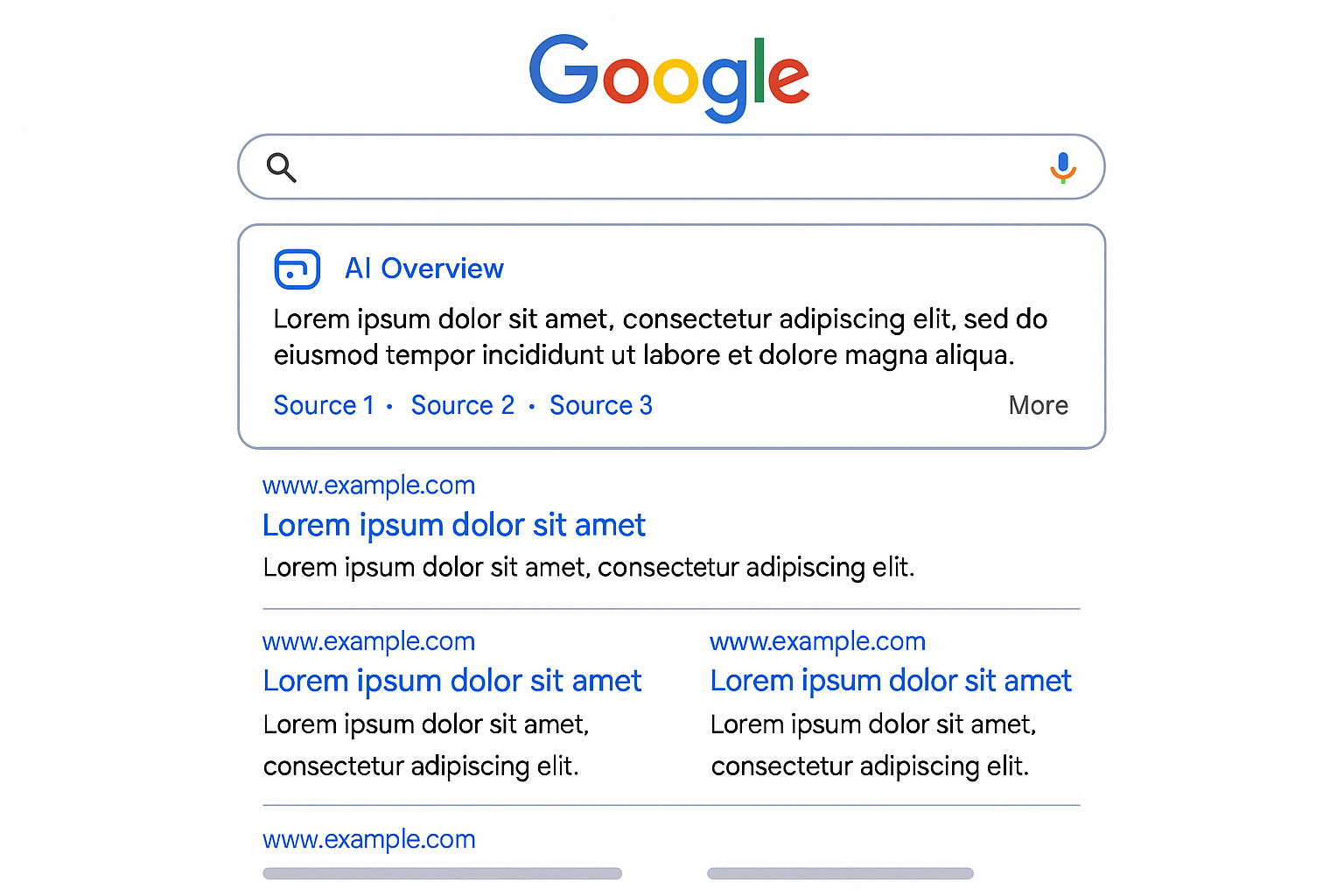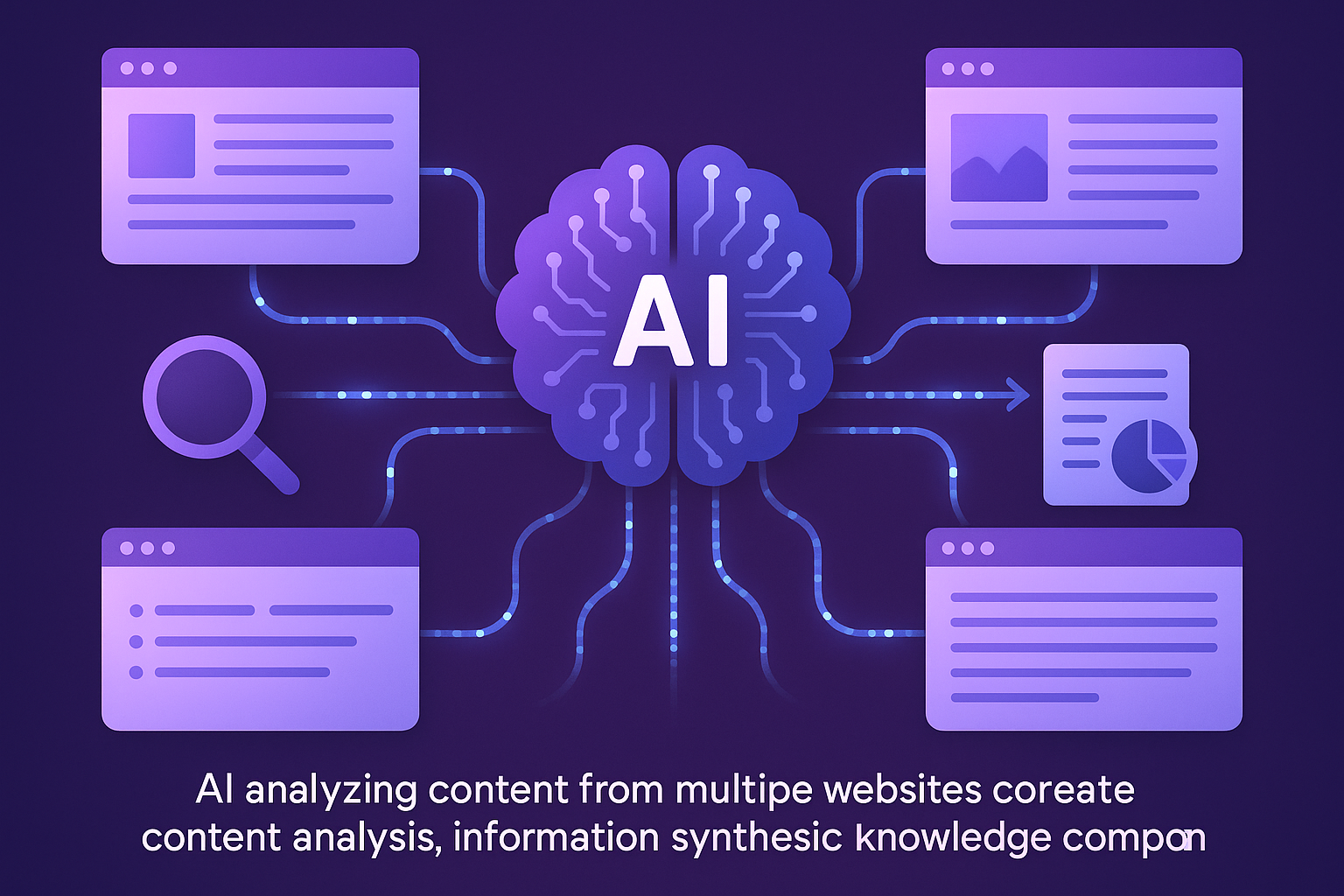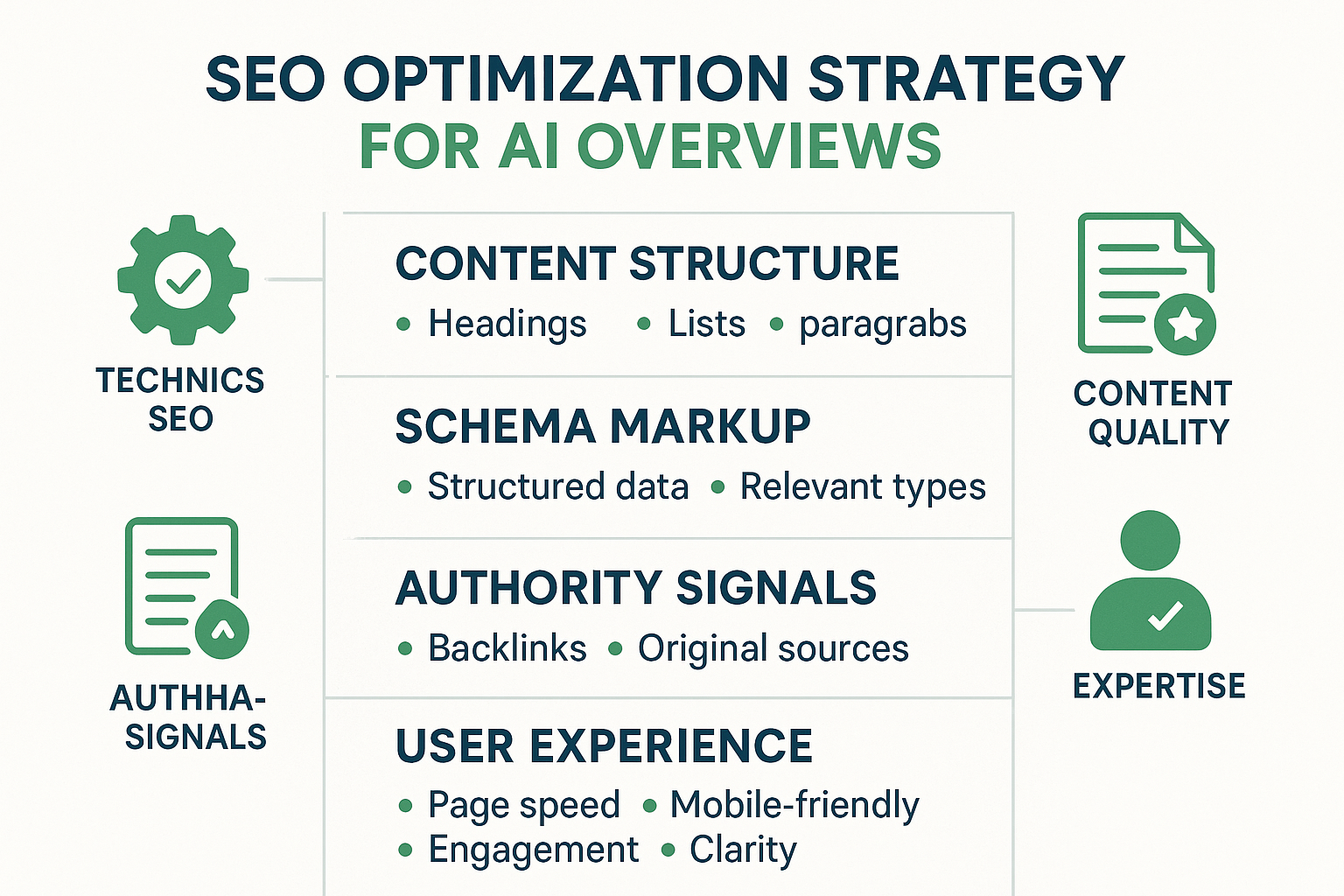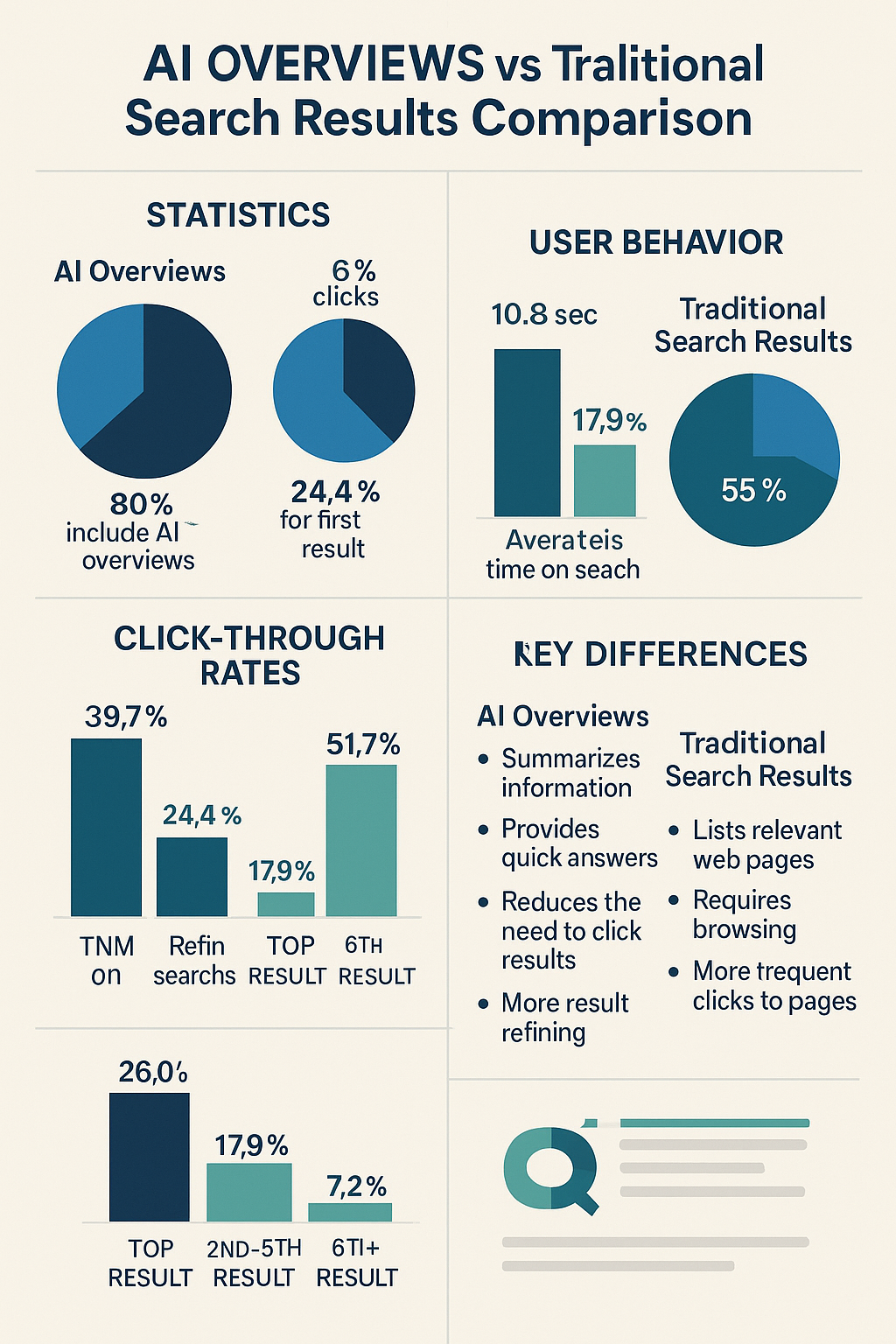AI Overviews SEO: How to Optimize for Google's AI-Generated Answers in 2025

Introduction
Google's AI Overviews have fundamentally transformed how search results are presented, creating a new paradigm for SEO professionals in 2025. These AI-generated summaries appear prominently at the top of search results, often before traditional organic listings, making optimization for AI Overviews crucial for maintaining search visibility and traffic.
AI Overviews represent Google's most significant search innovation since the introduction of featured snippets. Unlike traditional search results that simply list web pages, AI Overviews synthesize information from multiple sources to provide comprehensive, contextual answers to user queries. This shift has created both challenges and opportunities for content creators and SEO specialists.
Understanding how to optimize for AI Overviews isn't just about adapting to a new feature—it's about future-proofing your SEO strategy for an increasingly AI-driven search landscape. As Google continues to expand AI Overviews across more query types and languages, websites that master this optimization will gain a significant competitive advantage.
What Are Google AI Overviews?

Google AI Overviews are AI-generated summaries that appear at the top of search results, providing users with quick, comprehensive answers to their queries. These overviews synthesize information from multiple authoritative sources across the web, presenting a cohesive response that addresses the user's search intent.
Key Characteristics of AI Overviews
Comprehensive Information Synthesis: AI Overviews don't just pull from a single source. Instead, they analyze and combine information from multiple high-quality websites to create a complete answer. This approach ensures users receive well-rounded information that addresses various aspects of their query.
Source Attribution and Links: Every AI Overview includes clear citations and links to the sources used in generating the response. This transparency allows users to verify information and explore topics in greater depth, while providing traffic opportunities for cited websites.
Dynamic Content Adaptation: AI Overviews adapt their content based on query specificity and user intent. For broad queries, they provide general overviews, while specific questions receive detailed, targeted responses.
Visual Integration: Many AI Overviews incorporate images, charts, and other visual elements to enhance understanding and engagement. This multimedia approach makes complex information more accessible and digestible.
How AI Overviews Differ from Featured Snippets

While both AI Overviews and featured snippets appear prominently in search results, they serve different purposes and function differently:
Source Diversity: Featured snippets typically pull from a single source, while AI Overviews synthesize information from multiple sources. This multi-source approach provides more comprehensive and balanced information.
Content Generation: Featured snippets extract existing content directly from web pages, whereas AI Overviews generate new content by analyzing and combining information from various sources.
Query Coverage: AI Overviews handle more complex, multi-faceted queries that require comprehensive answers, while featured snippets work best for straightforward, factual questions.
User Experience: AI Overviews provide a more conversational, natural language experience that feels like getting advice from an expert, rather than reading extracted text snippets.
The Impact of AI Overviews on SEO

The introduction of AI Overviews has created significant shifts in SEO strategy and performance metrics. Understanding these impacts is crucial for developing effective optimization strategies.
Traffic Pattern Changes
Reduced Click-Through Rates: Initial data suggests that AI Overviews can reduce click-through rates to traditional organic results, as users may find sufficient information within the overview itself. However, this impact varies significantly by query type and industry.
Quality Traffic Increase: While overall traffic may decrease, the traffic that does come through tends to be higher quality. Users who click through after reading an AI Overview are typically more engaged and closer to conversion.
New Traffic Opportunities: Websites that successfully get cited in AI Overviews often see traffic from new, previously untapped query variations and long-tail keywords.
Ranking Factor Evolution
Authority and Expertise: Google's AI systems heavily favor content from authoritative sources with demonstrated expertise. E-E-A-T (Experience, Expertise, Authoritativeness, Trustworthiness) signals have become even more critical.
Content Depth and Comprehensiveness: Shallow content rarely gets cited in AI Overviews. Google's AI systems prefer comprehensive resources that thoroughly address topics from multiple angles.
Structured Information: Content that's well-organized with clear headings, bullet points, and logical flow performs better in AI Overview selection algorithms.
Competitive Landscape Shifts
Democratization of Visibility: Smaller websites with high-quality, authoritative content can now compete with larger sites for AI Overview citations, leveling the playing field in some niches.
Industry Authority Concentration: In YMYL (Your Money or Your Life) topics, AI Overviews tend to favor established, authoritative sources, potentially concentrating visibility among fewer players.
Core Optimization Strategies for AI Overviews

Successfully optimizing for AI Overviews requires a multi-faceted approach that addresses content quality, technical implementation, and user experience factors.
Content Structure and Format Optimization
Hierarchical Information Architecture: Organize content using clear, logical hierarchies with descriptive headings and subheadings. This structure helps AI systems understand and extract relevant information efficiently.
Use H2 and H3 tags strategically to create content sections that can be easily parsed and understood by AI algorithms. Each section should focus on a specific aspect of the topic while contributing to the overall narrative.
Answer-First Content Design: Structure content to provide clear, direct answers early in each section. AI systems favor content that immediately addresses user queries without requiring extensive reading.
Begin paragraphs with topic sentences that clearly state the main point, followed by supporting details and examples. This approach makes it easier for AI to identify and extract key information.
Comprehensive Topic Coverage: Address topics thoroughly from multiple angles and perspectives. AI Overviews favor content that provides complete, well-rounded information rather than surface-level coverage.
Include related subtopics, common questions, and practical applications to create comprehensive resources that AI systems recognize as authoritative and complete.
Technical SEO for AI Overviews
Schema Markup Implementation: Implement relevant schema markup to help AI systems understand your content structure and context. Use Article, FAQ, HowTo, and other appropriate schema types to provide additional semantic information.
Schema markup acts as a roadmap for AI systems, helping them understand the relationships between different pieces of information on your page and how they relate to user queries.
Page Speed and Core Web Vitals: Ensure your pages load quickly and provide excellent user experiences. AI systems consider user experience signals when determining which sources to cite in overviews.
Optimize for Core Web Vitals metrics including Largest Contentful Paint (LCP), Interaction to Next Paint (INP), and Cumulative Layout Shift (CLS) to improve your chances of being selected for AI Overviews.
Mobile Optimization: With mobile-first indexing, ensure your content is fully optimized for mobile devices. AI Overviews prioritize sources that provide excellent mobile experiences.
Authority and Trust Building

Author Expertise Demonstration: Clearly establish author credentials and expertise through detailed author bios, credentials, and experience descriptions. AI systems heavily weight author authority when selecting sources.
Include author bylines, professional backgrounds, and relevant qualifications to help AI systems understand why your content should be considered authoritative.
Source Citation and References: Include citations to authoritative sources and reference materials. AI systems favor content that demonstrates research depth and relies on credible sources.
Link to relevant studies, official documents, and other authoritative sources to strengthen your content's credibility and increase its likelihood of being cited in AI Overviews.
Regular Content Updates: Keep content current and accurate through regular updates. AI systems favor fresh, up-to-date information over outdated content.
Implement content review schedules and update information as new developments occur in your field. This ongoing maintenance signals to AI systems that your content remains relevant and accurate.
Advanced AI Overview Optimization Techniques
Long-Tail Keyword Targeting
Conversational Query Optimization: Focus on natural language, conversational queries that users might ask AI assistants. These queries often trigger AI Overviews and represent growing search behavior patterns.
Research question-based keywords and phrases that reflect how people naturally ask questions about your topic. Tools like AnswerThePublic and Google's "People Also Ask" feature can provide valuable insights.
Intent-Specific Content Creation: Develop content that addresses specific user intents behind queries. AI Overviews favor content that directly addresses the underlying need or question.
Create content clusters that address different aspects of user intent, from informational queries to comparison and decision-making needs.
Multi-Format Content Strategy
Visual Content Integration: Include relevant images, charts, diagrams, and infographics that support your text content. AI Overviews often incorporate visual elements to enhance user understanding.
Optimize images with descriptive alt text and captions that provide context and additional information. This helps AI systems understand how visual elements relate to your content.
Video Content Optimization: Create video content that complements your written material. AI systems increasingly consider video content when generating comprehensive overviews.
Include video transcripts and detailed descriptions to help AI systems understand and potentially reference your video content in overviews.
Content Depth and Expertise
Subject Matter Expert Collaboration: Work with recognized experts in your field to create authoritative content. AI systems recognize and favor content created by or in collaboration with established experts.
Include expert quotes, insights, and perspectives to add depth and authority to your content. This collaboration signals expertise and increases credibility.
Original Research and Data: Conduct and publish original research, surveys, and data analysis. AI systems highly value unique, original information that isn't available elsewhere.
Present research findings clearly with proper methodology explanations and data visualization to increase the likelihood of citation in AI Overviews.
Measuring AI Overview Performance
Key Performance Indicators
AI Overview Citation Tracking: Monitor when your content gets cited in AI Overviews using tools like Google Search Console and specialized SEO platforms that track AI Overview appearances.
Track citation frequency, query types that trigger citations, and the specific content sections that get referenced to understand what resonates with AI systems.
Traffic Quality Analysis: Analyze the quality of traffic coming from AI Overview citations. Look at engagement metrics, conversion rates, and user behavior patterns.
Compare traffic quality from AI Overview citations to traditional organic search traffic to understand the value and characteristics of this new traffic source.
Competitive Analysis: Monitor competitor citations in AI Overviews to identify content gaps and opportunities. Understanding what content gets cited can inform your content strategy.
Optimization Iteration
Content Performance Testing: Regularly test different content formats, structures, and approaches to identify what works best for AI Overview optimization.
A/B test different heading structures, content organization methods, and information presentation styles to optimize for AI citation.
Continuous Improvement: Use performance data to continuously refine and improve your AI Overview optimization strategy. The AI landscape evolves rapidly, requiring ongoing adaptation.
Common Mistakes to Avoid
Content Quality Issues
Thin or Superficial Content: Avoid creating shallow content that doesn't thoroughly address topics. AI systems favor comprehensive, in-depth resources over surface-level coverage.
Outdated Information: Don't let content become stale or outdated. AI systems prioritize current, accurate information and may stop citing outdated sources.
Poor Source Attribution: Failing to cite sources or using unreliable sources can hurt your credibility with AI systems and reduce citation likelihood.
Technical Implementation Errors
Inadequate Schema Markup: Don't neglect schema markup implementation. Missing or incorrect schema can prevent AI systems from properly understanding your content.
Poor Mobile Experience: Ignoring mobile optimization can significantly reduce your chances of being cited in AI Overviews, given Google's mobile-first approach.
Slow Page Speed: Poor page performance can eliminate your content from consideration for AI Overview citations, regardless of content quality.
Future Trends and Predictions
AI Overview Evolution
Expanded Query Coverage: Expect AI Overviews to expand to cover more query types and languages throughout 2025 and beyond. This expansion will create new optimization opportunities.
Enhanced Personalization: AI Overviews will likely become more personalized based on user history, location, and preferences, requiring more nuanced optimization strategies.
Multimedia Integration: Increased integration of video, audio, and interactive content within AI Overviews will require diversified content strategies.
SEO Strategy Adaptation
Authority-First Approach: SEO strategies will increasingly prioritize building genuine authority and expertise over traditional ranking factors.
User Experience Focus: User experience signals will become even more critical as AI systems better understand and evaluate user satisfaction.
Content Ecosystem Development: Successful SEO will require creating comprehensive content ecosystems rather than individual optimized pages.
Conclusion
AI Overviews represent a fundamental shift in how search results are presented and consumed. Success in this new landscape requires a comprehensive approach that prioritizes content quality, technical excellence, and genuine expertise.
The key to AI Overview optimization lies in creating truly valuable, comprehensive content that serves user needs while demonstrating clear authority and expertise. This isn't about gaming algorithms—it's about becoming the kind of authoritative source that AI systems naturally want to cite.
As we move further into 2025, websites that master AI Overview optimization will gain significant competitive advantages in search visibility and traffic quality. The investment in comprehensive, authoritative content creation and technical optimization will pay dividends as AI continues to reshape the search landscape.
The future belongs to content creators who understand that AI Overviews aren't just another SEO tactic to master—they're a fundamental shift toward rewarding genuine expertise and comprehensive value creation. By focusing on these principles, you'll not only optimize for AI Overviews but also future-proof your SEO strategy for whatever innovations come next.

